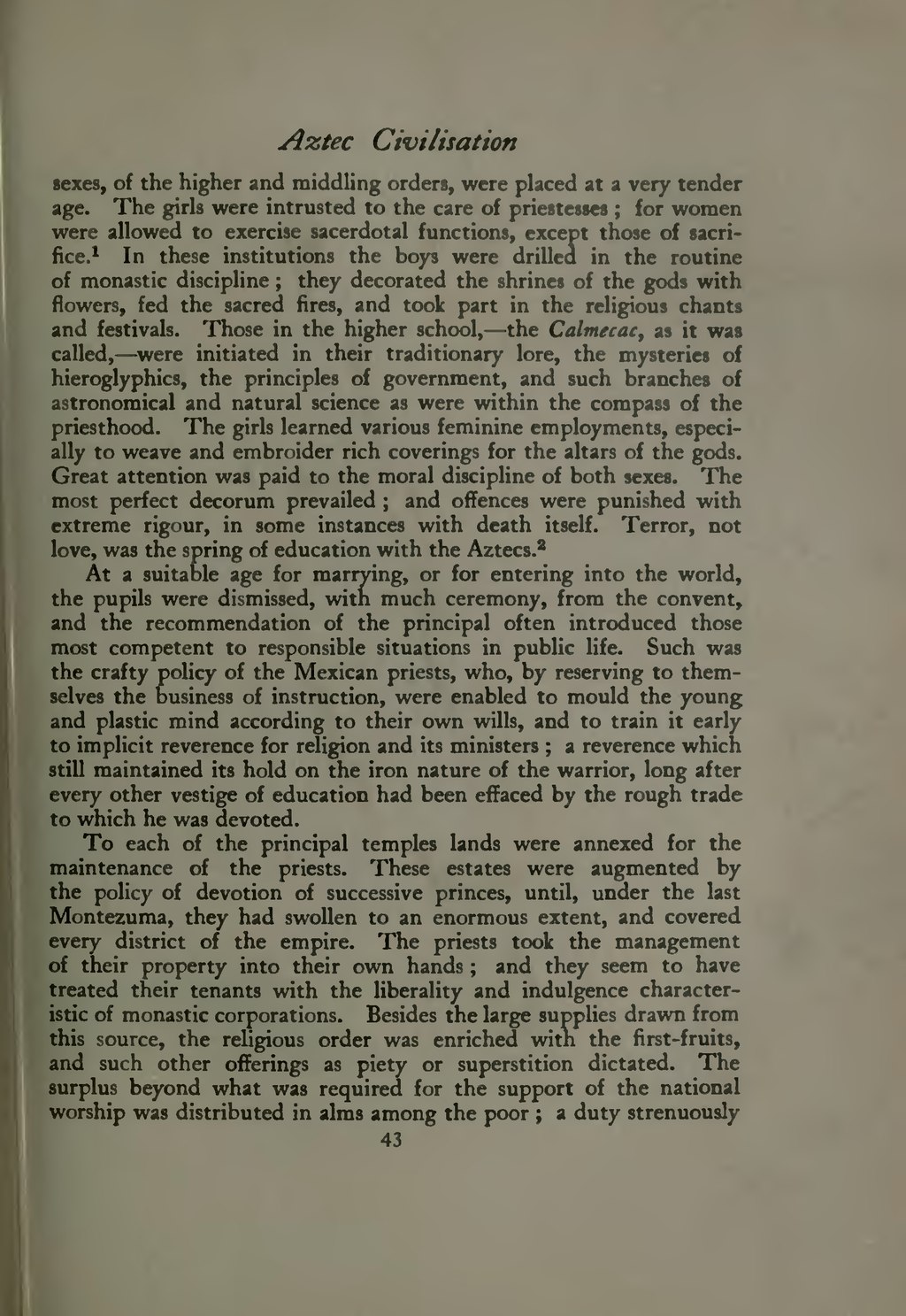Aztec Civilisation
sexes, of the higher and middling orders, were placed at a very tender age. The girls were intrusted to the care of priestesses; for women were allowed to exercise sacerdotal functions, except those of sacrifice.1 In these institutions the boys were drilled in the routine of monastic discipline; they decorated the shrines of the gods with flowers, fed the sacred fires, and took part in the religious chants and festivals. Those in the higher school,—the Calmecac, as it was called,—were initiated in their traditionary lore, the mysteries of hieroglyphics, the principles of government, and such branches of astronomical and natural science as were within the compass of the priesthood. The girls learned various feminine employments, especially to weave and embroider rich coverings for the altars of the gods. Great attention was paid to the moral discipline of both sexes. The most perfect decorum prevailed; and offences were punished with extreme rigour, in some instances with death itself. Terror, not love, was the spring of education with the Aztecs.2
At a suitable age for marrying, or for entering into the world, the pupils were dismissed, with much ceremony, from the convent, and the recommendation of the principal often introduced those most competent to responsible situations in public life. Such was the crafty policy of the Mexican priests, who, by reserving to themselves the business of instruction, were enabled to mould the young and plastic mind according to their own wills, and to train it early to implicit reverence for religion and its ministers; a reverence which still maintained its hold on the iron nature of the warrior, long after every other vestige of education had been effaced by the rough trade to which he was devoted.
To each of the principal temples lands were annexed for the maintenance of the priests. These estates were augmented by the policy of devotion of successive princes, until, under the last Montezuma, they had swollen to an enormous extent, and covered every district of the empire. The priests took the management of their property into their own hands; and they seem to have treated their tenants with the liberality and indulgence characteristic of monastic corporations. Besides the large supplies drawn from this source, the religious order was enriched with the first-fruits, and such other offerings as piety or superstition dictated. The surplus beyond what was required for the support of the national worship was distributed in alms among the poor; a duty strenuously
43

